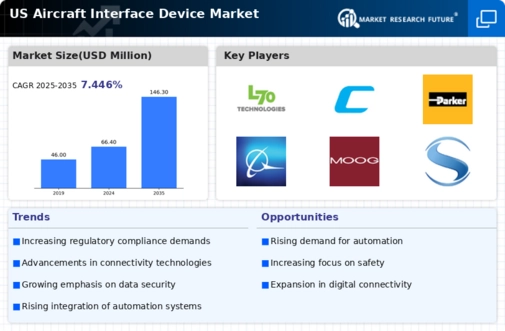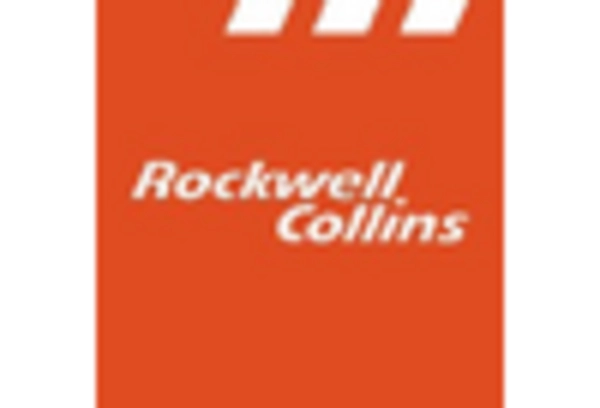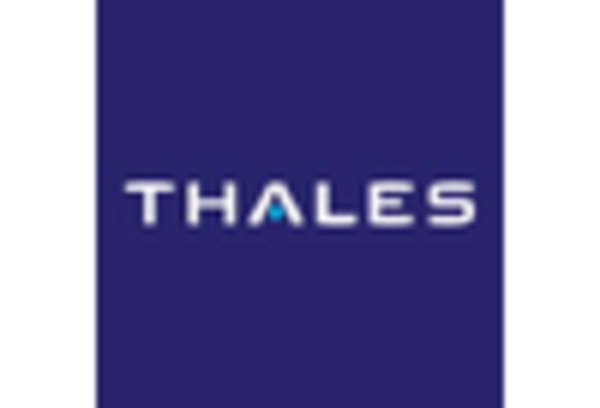The aircraft interface-device market is characterized by a dynamic competitive landscape, driven by technological advancements and increasing demand for enhanced operational efficiency. Key players such as Honeywell (US), Rockwell Collins (US), and Garmin (US) are at the forefront, each adopting distinct strategies to solidify their market positions. Honeywell (US) focuses on innovation and digital transformation, investing heavily in next-generation cockpit technologies. Rockwell Collins (US), now part of Collins Aerospace, emphasizes strategic partnerships and acquisitions to expand its product offerings and enhance its competitive edge. Garmin (US) leverages its expertise in avionics to integrate advanced navigation systems, thereby enhancing user experience and operational safety. Collectively, these strategies contribute to a competitive environment that is increasingly centered around technological innovation and customer-centric solutions.
In terms of business tactics, companies are localizing manufacturing and optimizing supply chains to enhance responsiveness and reduce costs. The market structure appears moderately fragmented, with several key players exerting significant influence. This fragmentation allows for a diverse range of products and services, catering to various segments within the aviation industry. The collective actions of these major companies shape the competitive dynamics, as they strive to differentiate themselves through unique offerings and operational efficiencies.
In October 2025, Honeywell (US) announced the launch of its latest cockpit interface system, which integrates artificial intelligence to enhance pilot decision-making. This strategic move underscores Honeywell's commitment to innovation and positions it as a leader in the digital transformation of aviation technology. The introduction of AI-driven solutions is likely to set new benchmarks for operational efficiency and safety in the industry.
In September 2025, Rockwell Collins (US) expanded its partnership with a leading aerospace manufacturer to co-develop next-generation avionics systems. This collaboration is indicative of Rockwell Collins' strategy to leverage partnerships for technological advancement, potentially accelerating the development of cutting-edge interface devices. Such alliances may enhance their market position by enabling faster time-to-market for innovative solutions.
In August 2025, Garmin (US) unveiled a new line of interface devices designed specifically for unmanned aerial vehicles (UAVs). This strategic initiative reflects Garmin's proactive approach to tapping into emerging markets, particularly in the UAV sector, which is experiencing rapid growth. By diversifying its product portfolio, Garmin aims to capture a larger share of the evolving aviation landscape.
As of November 2025, current trends in the aircraft interface-device market are heavily influenced by digitalization, sustainability, and the integration of AI technologies. Strategic alliances are increasingly shaping the competitive landscape, allowing companies to pool resources and expertise for enhanced innovation. Looking ahead, it appears that competitive differentiation will evolve from traditional price-based competition to a focus on technological innovation, reliability in supply chains, and the ability to deliver sustainable solutions. This shift may redefine market dynamics, compelling companies to invest in R&D and collaborative ventures to maintain their competitive edge.

















Leave a Comment